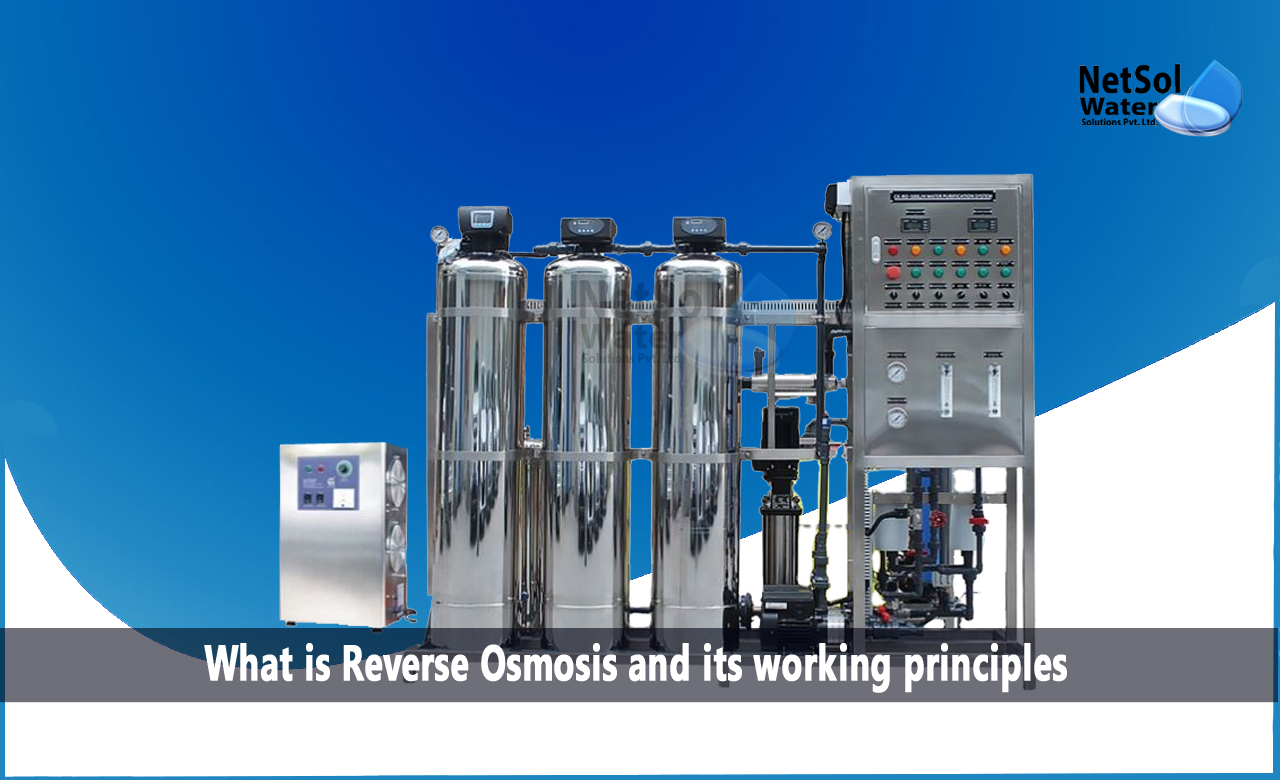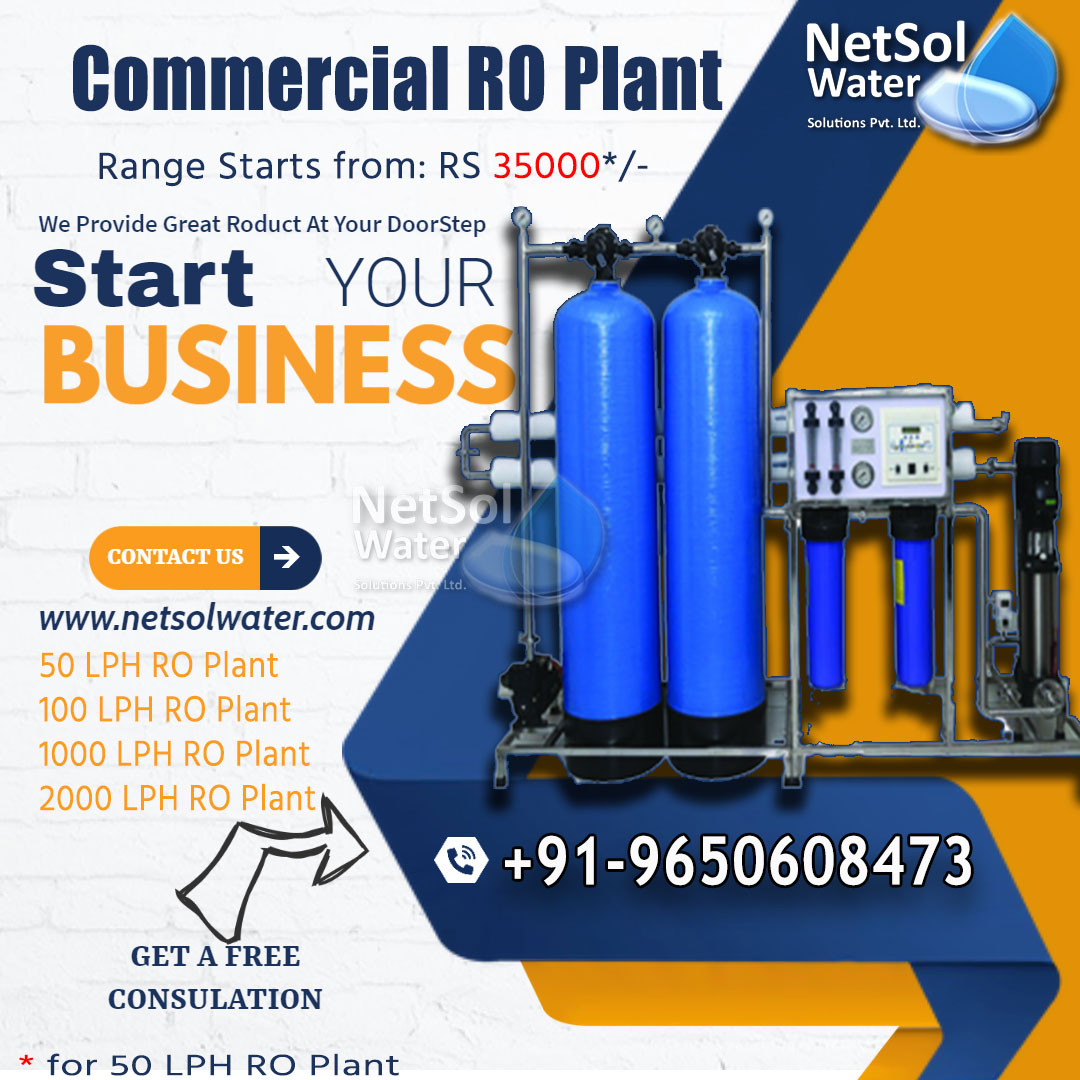What is Reverse Osmosis and its working principles?
Access to clean and safe water is crucial for human health and well-being. Reverse osmosis (RO) has emerged as a leading technology for water purification, providing an effective and reliable method for producing clean and potable water. In this blog, we will provide an overview of reverse osmosis, its working principles, and its significance in ensuring access to clean water for communities around the world.
1. Understanding Reverse Osmosis:
Reverse osmosis is a process that utilizes a semipermeable membrane to separate impurities and contaminants from water. It operates on the principle of osmosis, which is the natural movement of solvent molecules from an area of low solute concentration to an area of high solute concentration through a membrane. In reverse osmosis, pressure is applied to the more concentrated side, forcing the water molecules to pass through the membrane while leaving behind contaminants.
2. Key Components of Reverse Osmosis Systems:
Reverse osmosis systems typically consist of several essential components:
· Pre-Treatment: This stage involves the removal of larger particles, sediment, and organic matter from the water through processes like sediment filtration, activated carbon filtration, or chlorination. Pre-treatment helps protect the RO membrane and enhances system performance.
· High-Pressure Pump: A pump is used to apply pressure to the water, increasing its pressure and driving it through the RO membrane. This pressure is essential to overcome the natural osmotic pressure and facilitate the separation process.
· Semipermeable Membrane: The heart of the reverse osmosis system, the semipermeable membrane, allows water molecules to pass through while rejecting dissolved solids, salts, minerals, bacteria, viruses, and other contaminants. Thin-film composite (TFC) membranes are commonly used due to their high rejection rates and durability.
· Post-Treatment: After passing through the membrane, the purified water undergoes post-treatment processes to ensure its quality and taste. This may involve additional carbon filtration, UV disinfection, or mineralization to optimize the water's characteristics before consumption.
3. Benefits of Reverse Osmosis
Reverse osmosis offers several advantages for water purification:
· High Removal Rates: Reverse osmosis can effectively remove a wide range of contaminants, including salts, minerals, heavy metals, bacteria, viruses, and organic compounds. It provides a comprehensive purification process, ensuring clean and safe drinking water.
· Energy Efficiency: Reverse osmosis systems have become increasingly energy-efficient over time, reducing the operational costs associated with water purification. Innovations such as energy recovery devices and improved membrane designs contribute to higher efficiency.
· Versatility: Reverse osmosis can be used for various applications, from residential water filtration to large-scale industrial processes. It is adaptable to different water sources, including brackish water, seawater, and wastewater, making it a versatile solution for diverse water purification needs.
4. Considerations and Limitations:
While reverse osmosis is highly effective in removing a wide range of contaminants, it's important to consider certain factors:
· Waste Disposal: Reverse osmosis systems generate a concentrate stream containing the rejected contaminants. Proper disposal or treatment of this concentrate is necessary to minimize environmental impact.
· Maintenance and Membrane Lifespan: Regular maintenance, including membrane cleaning and replacement, is crucial to ensure optimal system performance and longevity. Membrane fouling, scaling, and biofouling can affect the efficiency of the RO system if not addressed promptly.
· Limitations on Certain Contaminants: While reverse osmosis is effective against most contaminants, it may have limitations in removing certain dissolved gases, volatile organic compounds, or contaminants with very small molecular sizes. Additional treatment processes may be required for complete removal.
Conclusion
Reverse osmosis is a powerful technology that plays a vital role in ensuring access to clean and safe drinking water. By effectively removing contaminants through a semipermeable membrane, reverse osmosis provides a reliable solution for water purification in various settings. As advancements continue, reverse osmosis systems become more efficient, cost-effective, and adaptable to different water sources, contributing to improved water quality and public health worldwide.




